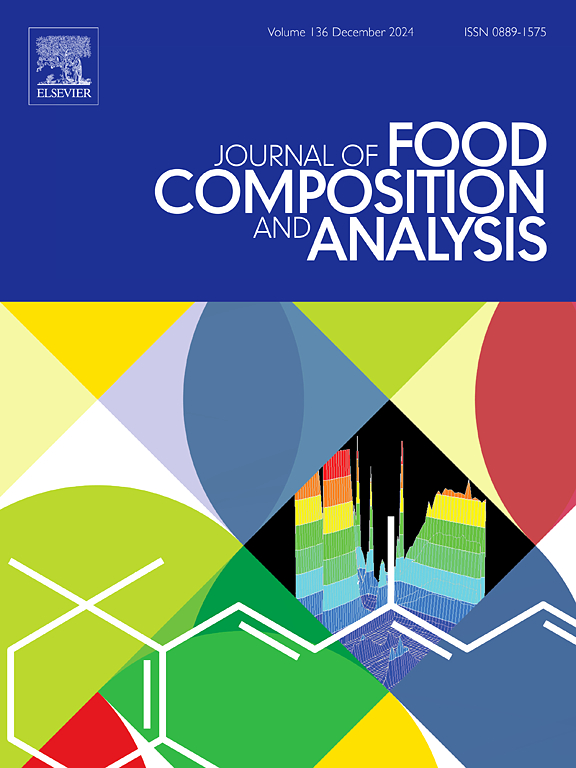Smart film based on anthocyanin-defective UiO-66 synergistic response for meat freshness monitoring and packaging
IF 4.6
2区 农林科学
Q2 CHEMISTRY, APPLIED
引用次数: 0
Abstract
A highly sensitive and reusable smart film was developed for real-time detection of volatile amines to monitor meat freshness. The film was fabricated by embedding defect-engineered UiO-66 and Lycium ruthenicum Murray anthocyanins (LRA) into a polyvinyl alcohol and starch matrix, forming the composite film PS/LRA/UiO-66. This film exhibited distinct color changes from rose-red to purple-gray to yellow-green across a wide pH range (2–12). It responded rapidly to ammonia, with a visible color change occurring within 1 min. The incorporation of UiO-66 significantly improved color stability, maintaining an unnoticeable ΔE (<4) for up to 30 days. Furthermore, it enabled the film to be reused at least three times, addressing the common irreversibility problem in conventional anthocyanin-based systems. Testing with meat samples showed a linear relationship between the film’s color change and total volatile basic nitrogen (TVB-N) levels during spoilage, confirming its effectiveness as a freshness indicator. In addition, the film functioned as an active packaging material that effectively slowed the spoilage process. These results demonstrate the film’s potential for intelligent food packaging and real-time freshness monitoring under ambient conditions.
基于花青素缺陷UiO-66协同响应的智能薄膜用于肉类新鲜度监测和包装
开发了一种高灵敏度和可重复使用的智能薄膜,用于挥发性胺的实时检测,以监测肉类的新鲜度。将缺陷工程的UiO-66和枸橼酸花青素(LRA)包埋在聚乙烯醇和淀粉基质中,形成复合膜PS/LRA/UiO-66。在较宽的pH范围内(2-12),该膜呈现出明显的颜色变化,从玫瑰红到紫灰色到黄绿色。它对氨反应迅速,在1 min内发生明显的颜色变化。UiO-66的加入显著提高了颜色稳定性,保持不明显的ΔE (<4)长达30天。此外,它使薄膜至少可以重复使用三次,解决了传统花青素基系统中常见的不可逆性问题。对肉类样品的测试表明,在变质过程中,薄膜的颜色变化与总挥发性碱性氮(TVB-N)水平之间存在线性关系,证实了其作为新鲜度指标的有效性。此外,薄膜作为一种活性包装材料,有效地减缓了腐败过程。这些结果证明了薄膜在智能食品包装和环境条件下实时新鲜度监测方面的潜力。
本文章由计算机程序翻译,如有差异,请以英文原文为准。
求助全文
约1分钟内获得全文
求助全文
来源期刊

Journal of Food Composition and Analysis
工程技术-食品科技
CiteScore
6.20
自引率
11.60%
发文量
601
审稿时长
53 days
期刊介绍:
The Journal of Food Composition and Analysis publishes manuscripts on scientific aspects of data on the chemical composition of human foods, with particular emphasis on actual data on composition of foods; analytical methods; studies on the manipulation, storage, distribution and use of food composition data; and studies on the statistics, use and distribution of such data and data systems. The Journal''s basis is nutrient composition, with increasing emphasis on bioactive non-nutrient and anti-nutrient components. Papers must provide sufficient description of the food samples, analytical methods, quality control procedures and statistical treatments of the data to permit the end users of the food composition data to evaluate the appropriateness of such data in their projects.
The Journal does not publish papers on: microbiological compounds; sensory quality; aromatics/volatiles in food and wine; essential oils; organoleptic characteristics of food; physical properties; or clinical papers and pharmacology-related papers.
 求助内容:
求助内容: 应助结果提醒方式:
应助结果提醒方式:


